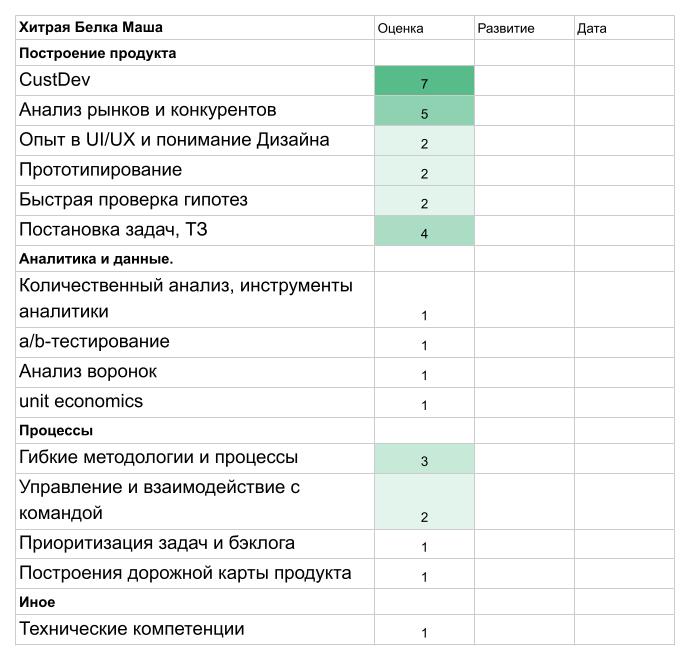In this part of the article, we will talk about the practical application of the material of the first part and the transition from one profession of a product manager. As an example, let's take a customer service manager and analyst who are transitioning to product management, and based on their example, we will build specific paths for mastering the profession and analyze examples of transition.
This material is one of the possible ways and not a miracle cure!
First of all, let's talk about two learning concepts - "T" and "X". These concepts are important for further understanding, career paths and transitions from profession to profession.
Learning concept "T" and "X".
"T" - shaped training profile. This concept is understood to mean the development of skills in one specialization and the development from this specialization into adjacent directions. An example is an analyst who develops in the field of data analysis, and then becomes a super specialist there, develops, for example, in related areas - statistics, big data analysis, etc. These are the so-called (T-shaped skills) - "T" shaped profile of skills development.

Such specialists are very important in narrow subject areas. They have tremendous competence. It is certainly possible to become product managers using the T-shaped concept for learning. But it will be very hard to work. But these people make super engineers.
«X» , . : , , , . , – . . …
«X» . , , .
, , .,
. , , -, .
, , -, , .
, . , . , , , , , , , .
: , , , , .
- Customer development, unit economics .
. , - (agile, UX/UI,, HADI, Customer Development ..). , - . , . , , .
, : Data Driven, , , , , , ..
. , . . , , , . , . . , - , . , , ?
: , , , , , , , , , . .
.
, , , .
– , , . , 2 WEB .
– , IT . , , , . , .
. , , – -.
. (soft skills) (hard skills).
Soft skills - ́ ́ ́ ́- , , , , .
Hard skills ( . « ») — , , , .
, . - hard skills, . ?
: - . . , , , . .
, , – , , 1 10. «1» – , «10» – , .
, ?
, , .
, . , , -.
CustDev
UI/UX
-
,
.
,
a/b-
unit economics

, – . , . .
, 1 10 .
:

.
, - . ?
, , . .
, . ? ?
, -.
– CustDev, , UI/UX, , .
, , . , .
?
: UI/UX , , , UI/UX . , .
, (X-shaped skills) - X , . , .
, , , . .
, , . «» , , , .

. , , . , , ( ). , , .
, , . . , . – , .
:
- .
– .
- , -.
, - – .
.
, !
, , , , . .
- -:
.
Running Lean, Ash Maurya
User Stories: Agile Software Development by Mike Cohn
The route has been completed! Application of consumer travel cards to increase sales and loyalty. Ilya Balakhnin
Business from scratch. Lean Startup method for quickly testing ideas and choosing a business model. Rhys Eric
Ask your mom. How to communicate with clients and confirm the correctness of your business idea if everyone is lying around? Fitzpatrick Rob
You can write to me